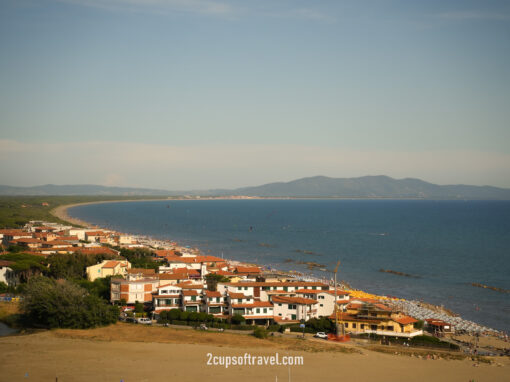Thinking of an extended trip to Europe? If the answer is yes, you need to consider something called the Schengen Zone. This guide looks to shed light onto what the Schengen Area involves, what countries are included, recent changes, and ways you can navigate around the rules to extend time in other countries.

The Schengen zone, a border-free region across several European countries, offers a seamless travel experience designed to aid movement between the region. However, there is a 90/180 rule that is important to understand and adhere to. The Schengen 90/180 rule permits non-EU visitors to stay in the Schengen area for up to 90 days within any rolling 180-day period. This means each day you spend in the zone counts towards your 90-day limit within the last 180 days. If you stay 60 days in one country, you have 30 days left to use within that period before needing to reset by spending time outside the Schengen zone. Misunderstanding this rule can lead to overstaying and potential penalties. Still confused, read more here or check out the rest of the guide which helps to provide greater clarity.
The Schengen Area countries are displayed visually and listed below:
- Schengen Area Countries (29 countries): Austria, Belgium, Bulgaria, Croatia, Czech Republic, Denmark, Estonia, Finland, France, Germany, Greece, Hungary, Iceland, Italy, Latvia, Liechtenstein, Lithuania, Luxembourg, Malta, Netherlands, Norway, Poland, Portugal, Romania, Slovakia, Slovenia, Spain, Sweden, Switzerland
- Non-Schengen countries: Albania, Armenia, Belarus, Bosnia & Herzegovina, Cyprus, Georgia, Ireland, Kosovo, Moldova, Montenegro, North Macedonia, Serbia, Turkey, United Kingdom.

Important information around the Schengen Zone
Do you need to apply for a Schengen Visa?
It depends on what country you hold a passport for. Many western countries have visa-free entry (e.g. Australia, USA, NZ, much of South America, Europe) aren’t required, however much of Asia, Africa, Middle East and some other countries do require applications for the visa before visiting. The figure below if from Schengen Visa Info and displays this visually.

So do I need to apply?
- Possibly.. you can check if you require application for a Schengen Visa here.
- If you don’t fall into the automatic Schengen Visa countries, you may need to specifically apply for a visa. You should be able to find out more from your countries official travel website, but can also check out Schengen Visa Info.
What are the entry requirements to the Schengen Zone:
- Visa or from a visa-free country (see above)
- Passport in date which expires at least 3 months AFTER the end of your holiday
- Proof of financial means
- Travel insurance
- Proof or return flight home
- Proof of accommodation
- See more here
What if I overstay my 90 days?
The answer is, it depends. We have read mixed things online about this. Officially, if you overstay, you may be subject to fines, deportation/cancellation of visa, and being banned from entering the Schengen Area again for a period of time. Some people report online not being checked when leaving and overstaying but days or weeks, however our experience was mixed. In some countries, they ‘didn’t care’ about the amount of days, while other countries counted every single day in the Schengen Area from our trip. We would strongly recommend you stick to the rules and look to find legal ‘workarounds’ as discussed in the section below.
Recent Updates to the Schengen Zone
There are some recent Schengen Area updates which will affect many travellers plans. Previous ‘non-Schengen’ countries Croatia, Romania and Bulgaria have all not joined the Schengen Zone. Croatia joined in 2023, removing one of the best ‘non-Schengen’ countries to ‘work around’ the 90/180 rule for travellers. In 2022 we spend 1 month in Croatia, and our plans would have significantly changed had Croatia been in the Schengen zone at the time. In March 2024 Bulgaria and Romania also joined the Schengen Area. This also would affect many travellers, and would have changed our travels a little. Both countries are definitely underrated and were strong targets to ‘work around’ Schengen area requirements in the past. Keep these changes in mind when considering your visit to Europe.


How we have navigated the Schengen Zone on our travels
We have visited Europe on multiple occasions, however in 2022 we visited for over 6 months full time, meaning the Schengen Area was particularly relevant for our travel. We did a lot of research at the time, which has helped our recommendations to others, and to inform this guide. We have listed a few of the ways we ‘navigated’ the zone below:
- Schengen Countries: We had to prioritize what we wanted to see in these countries. Unfortunately, many of the Schengen Area countries are popular destinations, and you won’t be able to see everything you want. We had to skip some particular areas and countries, but it gives us an excuse to return. 90 days seems like a lot, but in reality this fills up pretty quickly.
- Non-Schengen Countries: There are so many great non-Schengen countries in Europe. We spend 3 months between current non-Schengen countries Albania, Bosnia, Montenegro, North Macedonia, Turkey and UK. We also spent a fair bit of time in ‘new Schengen countries’ Croatia, Romania and Bulgaria. In particular, the Balkan Area has amazing non-Schengen countries and is highly recommended. Turkey is a huge country with lots to offer, and you could easily speed weeks or a month here. And the UK is an excellent ‘base’ for Europe travel.
- Non-Europe Countries: We visited the nearby Morocco for a few weeks and recommend this as an excellent addition to your Europe trip! It’s close, very different from mainland Europe, and is non-Schengen. We had planned to visit New York and/or the Middle East, but didn’t end up using these options.
- Visa Waiver Exemptions: Australia has a number of visa waiver exemptions for around 70 years ago that we investigated. We ended up confirming through the Netherlands consulate that the Australia-Netherlands visa waiver agreement is still valid, and used this to extend our time >90days total in the Schengen Zone. Read more on this below, and as always, do your own research here.



Ways to ‘navigate’ the zone?
There are a few legal ways to ‘navigate’ around the Schengen Zone rules to increase your stay in Europe. We shed light on a few of the options below, but want to preface this by saying this is general advice only! Do your own research and we take no responsibility if you have any issues around your visas or travel eligibility.
Non-Schengen Countries:
This is the easiest way to ‘work around’ the Schengen Zone rules. There are a number of amazing non-Schengen countries you should check out, even if you aren’t going over your 90 day limit. In particular, we recommend Albania, Montenegro, North Macedonia, Bosnia, UK/Ireland, and Turkey as options. We also haven’t visited but have heard great things about Georgia, Cyprus and Kosovo.
Work Visa:
Many countries have the ability to apply for Work Visa’s. For Australians, many apply to the UK for a work visa due to the countries working together for applications for those under 35. If you are considering working overseas, we recommend you research the specific countries you are considering and their work visa application.
Specific Country Visas:
This is probably your best option outside of visiting non-Schengen countries. We used specific country visas as a way of extending our length of stay in specific European countries. Firstly, we want to acknowledge that you need to do your own research here, and use our info as a general guide. These specific visa waivers or specific country visas will be specific to your own country, and as Australians, what applies for us, may not work for you. Use this as inspiration to investigate further.
- We specifically used a ‘little known’ bilateral visa waiver agreement between Australia and Netherlands from 1951 allowing 90 days of non-visa stay between countries. We made sure to have printed proof of the agreement to show to border officials (be prepared not everyone may know about this). See more below.
- Countries with Visa Waiver Agreements for Australians: see here (Smart Traveller) or check out individual agreements below. These often require you to apply through the consulate, sometimes before you leave and often in person. This requires planning and preparation beforehand. If you are going to use these, we recommend you check with the government consulates and have email/message proof plus the visa waiver agreement below (print/store these). We aren’t aware if all of these work, but do know that The Netherlands option did work for us!
– Netherlands treaty (90 days)
– Austria (90 days)
– Germany (90 days)
– Belgium (60 days)
– Italy (90 days)
– Luxembourg (60 days)
Digital Nomad Visas:
The ‘digital nomad visa’ is an increasingly popular method of people extending their stay and working online overseas. Some of the countries which provide these digital nomad visas include Croatia, Portugal, Spain, Norway, Estonia, Hungary, Greece, Albania, Romania, Germany, Iceland, Italy and others. Importantly, these visas require you to have proof of regular income, either per month or per year, and should only be used if you are looking to work remotely, not as a holiday visa. The are often between 6-12months in length. See more about digital nomad visas here or in this second excellent guide.
European Passport:
If you have a current European passport, or the ability to apply for one through family lineage or marriage, this may be a great option to allow you to spend extended time in another country. This would require a meeting with the local consulate to discuss your options.
A few Schengen resources and websites to assist you
- Schengen Visa Information: A great website with information about the zone, visa applications, and guides to aid your decision making process: https://www.schengenvisainfo.com/
- Schengen Visa Application Wizard: Do you need to apply for a Schengen Visa, or does your passport automatically cover the application? Check with the Schengen Visa Info Wizard here: https://www.schengenvisainfo.com/wizard/
- Schengen Zone Days Calculator: See if your planned travel fits within the 90/180 days with the Schengen Visa calculator found here: https://www.schengenvisainfo.com/visa-calculator/
- The 90/180 Schengen Zone Rules: See more about the rules here: https://www.schengenvisainfo.com/90-180-day-rule/
- Smart Traveller (AUS Info): Another great website, designed for Australians, is applicable for many with great information: https://www.smartraveller.gov.au/before-you-go/the-basics/schengen
- Demystifying the Schengen Zone (Europe Travel Info): A good overview to help understanding of the Schengen Zone: https://europetravelinfo.com/schengen-zone-europe-rules-tips-links/
- Digital Nomad Visa Guide: A great blog covering off the countries, and income requirements, to obtain a digital nomad visa: https://n26.com/en-eu/blog/countries-with-digital-nomad-visas
- How to legally stay beyond 90 days (Nomadic Matt): This is a great guide to expand and explain more from what we have illustrated in this guide: https://www.nomadicmatt.com/travel-blogs/how-to-legally-stay-in-europe-for-more-than-90-days/
Did you get value from this guide? Consider subscribing to our blog!
Jump your email into the list below. We won’t spam you! It’ll just keep you updated whenever we post another travel-related adventure, memory or tid-bid!




Pingback
Pingback
Pingback
Pingback
Pingback
Pingback
Pingback
Pingback
Pingback
Pingback
Pingback
Pingback
Pingback